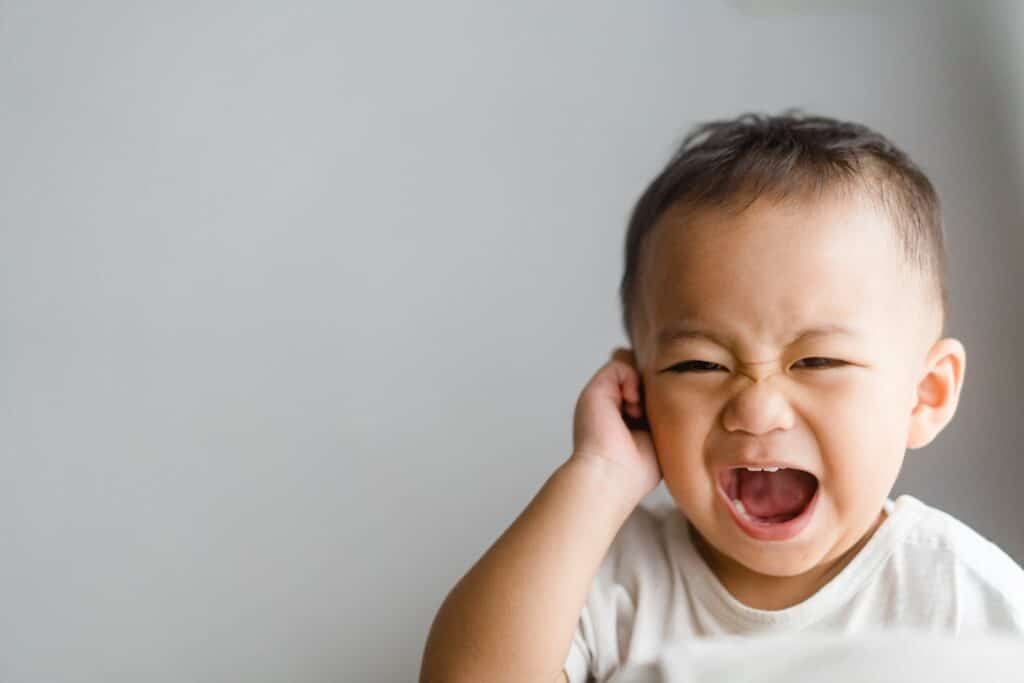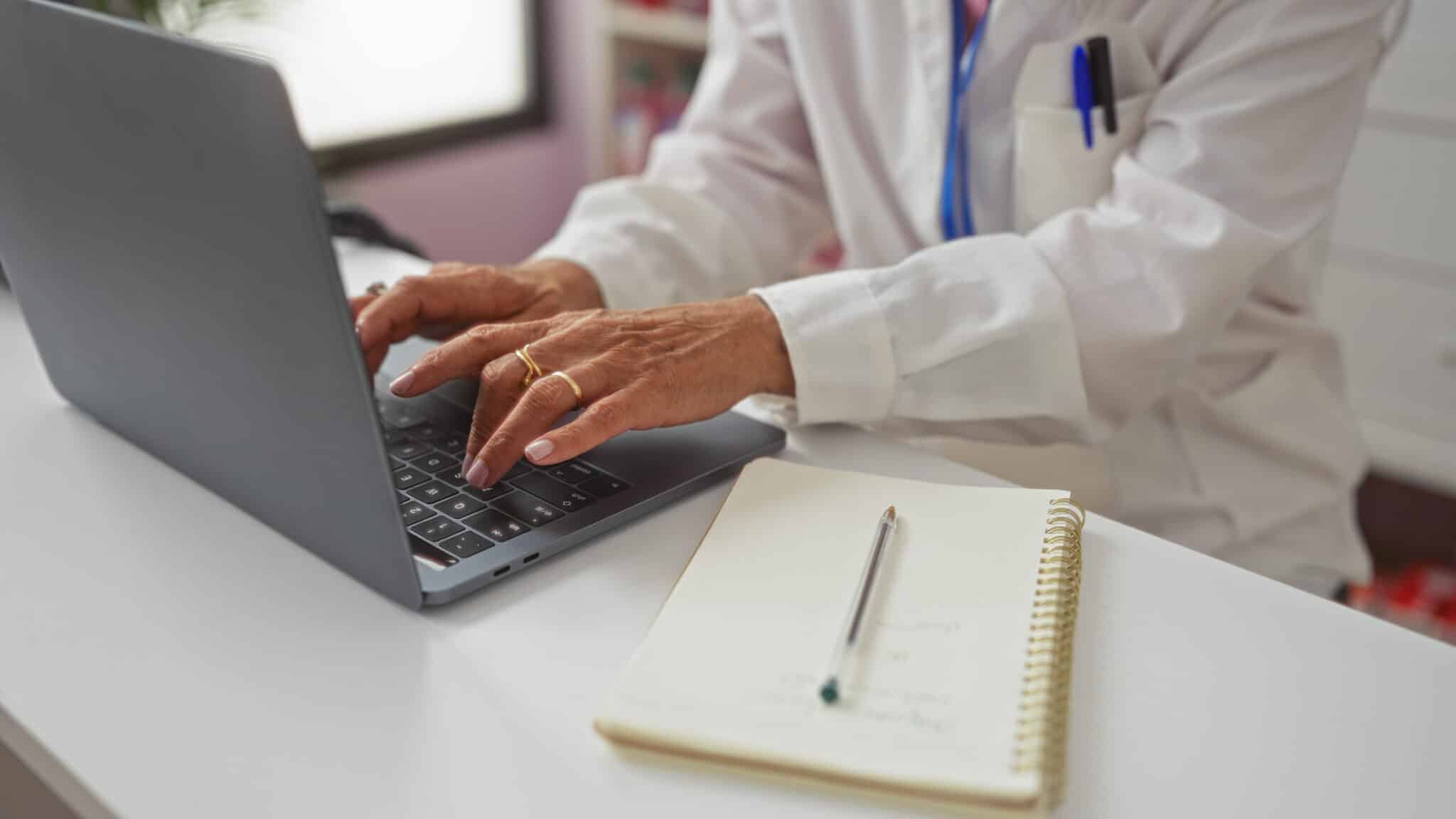Please enjoy ungated MicroCE content as part of freeCE‘s commitment to helping pharmacists become better medical providers. See our Mumps and Rubella article, as well as our Glaucoma pharmacy treatment article for previous MicroCE opportunities.
Table of Contents
Overview of Ear Infections
Pete Kreckel, microCE, 0.25 hours
When my wife Denise worked in State College at a clinic pharmacy, one of the pediatricians was insistent on using only the Amoxicillin/Clavulanate (Augmentin) 600 mg/5 mL concentration. She would not tolerate prescribing any Augmentin 250 mg/5 mL or Augmentin 400 mg/5 mL for her patients. If she read the emergency room reports, or listened to any other physician writing for the 250 mg/5 mL or the 400 mg/5 mL, she would instruct the parents to dump out the product dispensed, and come the pharmacy to get the 600mg/5cc product to decrease nausea, vomiting and of course, diarrhea.
One of my former PA students did the same. She sent me an email begging me to reinforce this concept as well. For otitis media the best option is the 600 mg/ 5mL to decrease clavulanate exposure and its side effects.
All of the amoxicillin/clavulanate products taste horrible and cannot be made palatable with any flavoring agent. I recommend the parent use an oral syringe, and have a teaspoon ready with Hershey chocolate syrup ready. Once the child swallows, stick the spoon of chocolate syrup in their mouth to clear the nasty taste.
EAR INFECTIONS
Otitis Externa:
Characterized by erythema (redness) and edema of the external auditory ear canal. Symptoms frequently include otalgia (ear pain), pruritis (itching), purulent discharge, and impaired hearing. Recent exposure to water or mechanical trauma (Q-tips, scratching etc.) can precipitate the condition. The ear canal may become blocked by hair follicles or wax providing a protective barrier and adequate environment for bacteria and fungi to grow. Edema commonly associated with external ear infections occurs from a change in normal pH, triggering an inflammatory response. Manipulation of auricle often causes pain response. Frequently referred to as “swimmers’ ear”. Infection is usually unilateral only affecting one ear at one time. Usually caused by gram negative rods (Pseudomonas aeruginosa and Staphylococcus aureus) or fungi (Candida and Aspergillus) which grow well warm, dark, moist environment.
Treatment of Otitis Externa:
- Protection of ear from further moisture and/or mechanical injury are key to treatment
- Avoid placing cotton swabs in the ear
- Oral acetaminophen and nonsteroidal anti-inflammatories
- Adequate for mild to moderate pain
- Short course of oral opioids may be prescribed for severe pain associated with uncomplicated otitis externa
- Should resolve within 48 to 72 hours of initiating antibiotic therapy
Primary Treatment:
- Neomycin/Polymyxin/Hydrocortisone (Cortisporin® otic) ear drops
- Dose: 4 drops three to four times daily
- MAX duration of 10 days
- Ciprofloxacin 0.3%/dexamethasone 0.1% (CiproDex Otic®)
- Dose: 4 drops into the affected ear(s) twice daily for 7 days
- Ofloxacin otic (Floxin otic®)
- Dose: 10 drops into affected ear(s) once daily for 7 days
- Ciprofloxacin + hydrocortisone (Cipro-HC®)
- Dose: 3 drops into affected ear twice daily for 7 days
- This preparation is notsterile
- Cannot be used when a patient has a perforated ear drum
- Swim Ear®
- Contains 95% isopropyl alcohol as a drying agent for “clogged ears”
Fungal infection for Otitis Externa:
- Nonperforated tympanic membrane: hydrocortisone/acetic acid otic (1%/2%)
- Perforated: Tolnaftate topical drops (1%) (usually found in the foot section)
- Fluconazole 200mg x1 dose then 100mg daily for 3-5 days
Otitis Media:
Inflammatory process of the middle ear. Inflammation of area behind the eardrum. It is accompanied by the presence of fluid, in the middle ear and a rapid onset of signs and symptom of ear infection.
Signs/Symptoms:
- Fever, otalgia, otorrhea, changes in balance or hearing, irritability, lethargy, vomiting or diarrhea.
- Patients commonly experience upper respiratory infection symptoms as well consisting of rhinorrhea, cough, congestion.
Types of Otitis Media
- Myringitis: inflammation of tympanic membrane
- Otitis media with effusion
- Acute otitis media
- Chronic suppurative otitis media
Microbial Pathogens: Overall Detection in Middle Ear Fluid
- VIRAL: up to 70% of all otitis media cases are of viral etiology.
- Bacterial and viral is 66% of cases
- Bacteria 92%
- No pathogen= 4%
- Streptococcus pneumoniae: Contributed to 49% of bacterial otitis media. Resistance is becoming more of a problem. Up to 50% of strains are resistant to macrolides
- Haemophilus influenzae: Contributed to 29% of the cases. Bacterial resistance is due to beta-lactamase production
- Moraxella catarrhalis: Contributed to 28% of cases. Almost all strains are beta-lactamase producing.
Benefits and Risks of Pharmacological Therapy:
A study conducted from 1966 to 1992 concluded that the overall rate of spontaneous resolution of acute otitis media was 81%. (https://www.aafp.org)
According to the new guidelines, watchful waiting is considered an appropriate option for
- Children six months to 23 months with unilateral infection and non-severe symptoms (presence of mild ear pain for less than 48 hours and a temperature less than 39°C or 102.2°F)
- Children two years or older with unilateral or bilateral infection and non-severe symptoms (presence of mild ear pain for less than 48 hours and a temperature less than 39°C or 102.2°F)
- Regardless of the use of an antibiotic, an analgesic should be considered within the first 24 hours to relieve (AAP guidelines 2013)
Conversely, antibiotic therapy should be prescribed for:
- All children less than six months
- Children six months of age or older with severe symptoms (presence of moderate to severe ear pain for at least 48 hours or a temperature of 39°C or 102.2°F or higher)
- Children six months to 23 months with bilateral infection and nonsevere symptoms (presence of mild ear pain for less than 48 hours and a temperature less than 39°C or 102.2°F for less than 48 hours)
- All children with acute otitis media with otorrhea
Treat ear pain with ibuprofen or acetaminophen. In most patients, symptoms begin improving within 24-72 hours of initiation of therapy. As a result less than 50% of the children complete the prescribed course of antibiotics. Adherence to antibiotic regimens may be improved by selecting agents that require less frequent dosing (once or twice daily) and by prescribing shorter (five days or less) treatment courses. Advise parents to bring children with suspected otitis media to the clinic for evaluation however, they should not always expect an antibiotic.
NON-PHARMACOLOGICAL TREATMENT MEASURES
Otitis Media:
- Local heat can help comfort the child
- American Academy of Otolaryngology recommends tubes being placed in patients who have had 4 episodes of AOM in past 6 months or 6 episodes in past year
- Myringotomy and insertion of tympanostomy tubes:
- Incision is made in tympanic membrane; middle ear effusion is aspirated
- Biflanged tympanostomy (ventilator tube) tube is inserted
- These tubes decrease episodes by 50%.
- They usually last 6-12 months
- After extrusion there is no evidence of ongoing benefit
Risk Factors for Otitis Media:
- Age – peaks between 6 and 12 months of age
- Family history: especially if siblings are prone to ear infections
- Day care: risk ratio is 2.8 to 5 times greater
- Tobacco exposure: risk ratio is 1.66 times greater
- Pacifier use: slight risk increase, with risk ratio of 1.24
OTITIS MEDIA TREATMENT AND PREVENTION
FIRST-LINE VS SECOND-LINE VS THIRD-LINE THERAPY
NO ANTIBIOTICS IN THE LAST 30 DAYS | ANTIBIOTICS IN THE LAST 30 DAYS | |
First line (initial empiric) therapy | Amoxicillin HD (high risk patients) | Amoxicillin HD or Amoxicillin/Clavulanate HD or cefuroxime, or cefdinir, or cefpodoxime or cefprozil (Adults–moxifloxacin or levofloxacin) |
Failure after 3 days RX | Amoxicillin/clavulanate HD *or*cefprozil or cefpodoxime or cefuroxime OR ceftriaxone | Ceftriaxone-IM in 3 daily doses. |
Failure at days 10-28 | Same as above, choose different regimen | Amoxicillin/clavulanate HD, cefuroxime, ceftriaxone-IM x3 , tympanocentesis. |
Prescribing Rules:
- Amoxicillin HD (high dose) (80-90 mg/kg/day)
- First line therapy for otitis media
- Divided into 2 or 3 doses (every 8 or every 12 hours)
- Amoxicillin/Clavulanate high dose
- Treatment of choice for first line failure (amoxicillin high dose)
- Amoxicillin-UD (usual dose)
- Not recommended for first line use in otitis media
- 40 mg/kg in 2 or 3 divided doses
- Amoxicillin HD
- 80-90 mg/kg/day in 2 or 3 divided doses (q8h or q12h)
Shortcut for Amoxicillin prescribing at 80 mg/kg (HD):
- High Dose =80-90mg/kg.
- Using 400 mg/5 mL concentration think of it as (80 mg/mL)
- 80mg/1 mL equals 80mg/kg therefore every 1 kg a child weighs he/she gets 1 mL of amoxicillin 400 mg/5 mL per day.
- EXAMPLE: Child weights 44lb. 44lb divided by 2.2lb/kg= 20kg
- The child gets 20 mL/ day may give 10 mL twice daily (1600mg/day)
Now here is the problem when prescribing Amoxicillin/Clavulanate (Augmentin®), which is dosed based on the component.
Drug | To get 1500mg amoxicillin | You get this much clavulanate daily |
Augmentin 125 mg/31.25 mL | 12 teaspoon | 375 mg |
Augmentin 250 mg/62.5 mL | 6 teaspoon | 375 mg |
Augmentin 400 mg/57 mL | 3.75 teaspoon | 213.75 mg |
Augmentin-ES 600 mg/42.9 mL | 2.5 teaspoon | 107.25 mg |
Augmentin 250 mg/125 mL | 6 tablets | 750 mg |
Augmentin 500 mg/125 mL | 3 tablets | 375 mg |
Augmentin 875 mg/125 mL | 2 tablets | 250 mg |
As you can see from the above chart for a child getting Amoxicillin 1500mg per day (37lb child) would get 107.25mg of clavulanate should the prescriber use Augmentin ES 600, versus 375mg of clavulanate should the prescriber use Augmentin 250/5.
Whenever you are prescribing Augmentin therapy HD (high dose) as is recommended for otitis media, it is critical to use Augmentin ES 600mg/42.9 to minimize clavulanate exposure and decrease incidence of severe GI upset and diarrhea. Maintain daily clavulanate dose <10 mg/kg/day. Amoxicillin/Clavulanate can cause diarrhea in 3- 34% of patients, and this percentage varies upon dose and regimen.
Clinical Pearls:
The younger a child is when they develop otitis media, the more likely they are to have a recurrence.
High dose amoxicillin is first line, do not use if child has had antibiotics the previous 30 days, or receiving prophylaxis with amoxicillin.
Standard treatment duration is 10 days, with short course being 1-7 days.
- Use 10 days for all children under 2 years of age, and ALL children with severe disease
- For children age 2 and older, with mild to moderate acute otitis media a 5-7 day course is appropriate
- A Cochrane review showed that in otherwise healthy children a 5 day course is as effective as the 10 day course supported in AAP/AAFP guidelines.
- Clinical improvement should be evident in 48-72 hours
- Antihistamines and decongestants are of NO value in the treatment of acute otitis media
Maximum Amoxicillin dose:
The recommended dose of amoxicillin is 80 to 90 mg/kg per day for otitis or respiratory infections due to resistant S. pneumoniae. The manufacturer recommended dose (per package insert is 1.75g/day. This is exceeded when a kid weighs over 20kg. When amoxicillin was approved in 1974, pneumococcal resistance was not a problem. Today feel comfortable dispensing 3g per day and sometimes up to 4g per day if necessary.
PREVENTATIVE MEASURES AGAINST OTITIS EXTERNA & OTITIS MEDIA
Prevention of otitis externa:
- Turn head to drain water after swimming or showering
- Utilizing earplugs may help prevent water from getting inside the ear but if water is already present it may trap water. There have been mixed results when looking at use of earplugs
PREVENTION of OTITIS MEDIA HIGHLIGHTS:
Be sure to emphasize the importance of prevention to all parents of small children
- Pneumococcal vaccine Use of the according to the childhood immunizations schedule has been shown to be effective in reducing the incidence of acute otitis media.
- Influenza vaccine: many cases of acute otitis media follow a viral upper respiratory tract infection. Reducing viral infections will reduce otitis media.
- Breastfeeding: Breastfeeding for 4-6 months reduces episodes of acute otitis media. American Academy of Pediatrics recommends exclusive breastfeeding for the first 6 months of life and to continue for at least the first year or longer, based on the abilities of the mother and child.
- Day care: Family provided day care or small group day care helps prevent otitis media.
- Tobacco smoke: Avoid exposure of household tobacco smoke.
- Pacifiers: Avoid giving your infant a pacifier
- Viral infections: Viral infections like the common cold increase the likelihood of otitis media. Wash hands frequently, do not share toys etc.
- Allergies: Inflammation and mucus caused by allergies can block the eustachian tube and make ear infections more likely
Prophylaxis: Antibiotic therapy for Otitis Media:
Use of antibiotics to prevent otitis media is a MAJOR contributor to the emergence of antibiotic resistant S. pneumoniae.
- Antibiotic prophylaxis for otitis media is NO longer recommended
- Pneumococcal conjugate vaccine (Prevnar-13) decreases frequency of otitis media in children
Have a great day on the bench!!






